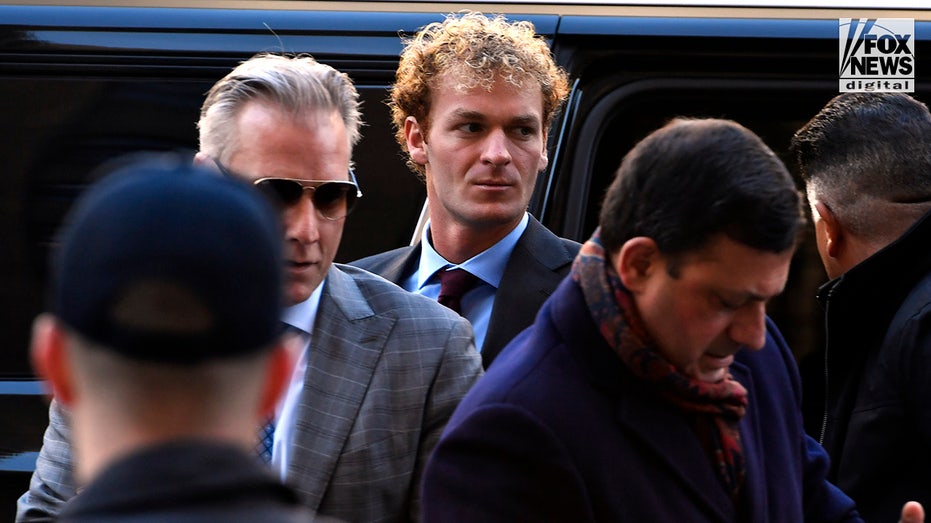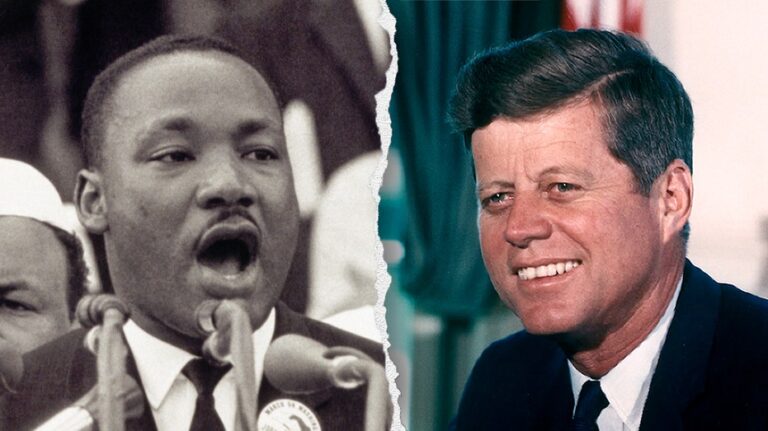
Daniel Penny’s subway chokehold trial resumes Monday, with attorneys expected to begin their closing arguments after a break for Thanksgiving.
The 26-year-old architecture student and Marine Corps veteran faces up to 15 years in prison if convicted of manslaughter for the death of Jordan Neely, a 30-year-old mentally ill homeless man who was high on synthetic marijuana when he barged onto a subway car and started screaming threats at the passengers.
Neely had a warrant out for his arrest at the time, the case’s final witness revealed before the defense rested its case – as well as a lengthy criminal history and schizophrenia.
Responding officers questioned Penny – without telling him Neely had died – and then let him go. Manhattan District Attorney Alvin Bragg’s office secured an indictment nearly two weeks later and Penny turned himself in.
A diverse cast of witnesses for the prosecution testified that Neely was scaring them with death threats in a subway outburst that went above and beyond the typical subway outbursts many members of the jury had witnessed before on the city’s troubled public transit system.
Defense attorney Steven Raiser went first, speaking for about two hours and arguing that Penny’s use of force was justified, legal and not the single cause of Neely’s death.
“All of those riders and more, Daniel Penny was the one who moved to protect them. Why? Because he had something the others didn’t, something unique to him. His training,” Raiser said. “Danny acted to save those people, and there’s no dispute that when Danny acted, he didn’t know whether Jordan Neely was armed.”
Bragg, who was not present during the beggining of Raiser’s summation, arrived in person after the lunch break and sat in the second row. Raiser resumed his remarks.
“The government wasn’t there. The police weren’t there. Danny was,” Raiser told the jury. “And when he needed help no one was there. The government has the nerve to blame Danny because police weren’t there? Blame Danny for holding on when police weren’t there?”
It took seven minutes for police to respond to the 911 cll and 20 minutes before medics arrived, he said. Neely was “on a collision course with himself,” and a “broken system” led up to his death, the lawyer said.
WATCH: Ex-NYPD Lt. says Daniel Penny trial sets a ‘bad precedent’ for police officers
When Raiser finished, Assistant Manhattan District Attorney Dafna Yoran gave a closing on behalf of the prosecution.
“No one had to die on May 1, 2023,” she said. “Jordan Neely did enter the subway car in an extremely threatening manner… so much less physical force would have done the job… Daniel Penny easily could have restrained Neely without choking him to death. We are here today because the defendant used way too much force for way too long in way too reckless of a manner.”
Once the arguments are over, Judge Maxwell Wiley is also expected to deliver thorough instructions to the jury before their deliberations after the defense raised many objections to how Bragg’s office handled the case, which the judge acknowledged early on raised “bias” concerns.
Prosecutors argue that Penny went too far when he put a belligerent, shouting Neely in a chokehold on a Manhattan subway car after he started screaming death threats.
Neely was Black and Penny is White, and prosecutors appeared to highlight the case’s racial undertones in court, even though Penny is not accused of a hate crime. They allowed one witness to repeatedly describe Penny as “the White man” and another to call him a “murderer” despite there being no murder charges filed in connection with the case.
Assistant District Attorney Dafna Yoran also brought up the term “homicide,” prompting Wiley to ask the jury to disregard the term, explaining that “homicide” means something different to a medical examiner than it does to a lawyer or a juror.
Witness Lauri Sitro testified that in 30 years of subway riding, she’s seen a lot of unstable people, but this “felt different.”
“I was scared for my son,” she testified under cross-examination. “It’s not like you can take a 5-year-old and run to the next train. I felt very relieved when Daniel Penny had stopped him from moving around sporadically.”
Sitro was not the only woman who told the court that Neely scared them when he barged onto the train, shouting threats and violently throwing his jacket. Several did, including Ivette Rosario, a teen straphanger who said she just wanted to “get away,” and Arethia Gittings, who said she “was scared s—less” and remained at the scene to speak with responding officers.
Gittings testified that it did not look like Neely was going to give up as Penny and the other men held him down, that she was especially terrified by the encounter after enduring prior attacks on other subway cars and that it didn’t look like Penny was applying pressure to Neely’s neck but rather trying to hold him still as officers were on the way.
“I came back to thank Mr. Penny for what he had done in that worst scenario,” she testified.
Another female passenger to testify was Caedryn Schrunk, a Nike brand manager who said Neely boarded the train and immediately filled the car with the stench of “soiled sweatpants.”
“I was scared that I was going to die in that moment,” she told the court.
In addition to the manslaughter count, Penny faces a lesser charge of criminally negligent homicide. The jurors must find Penny acted with “recklessness” to convict on manslaughter and “negligence” for the lesser charge.
Daniel Penny’s subway chokehold trial resumes Monday, with attorneys expected to begin their closing arguments after a break for Thanksgiving.
The 26-year-old architecture student and Marine Corps veteran faces up to 15 years in prison if convicted of manslaughter for the death of Jordan Neely, a 30-year-old mentally ill homeless man who was high on synthetic marijuana when he barged onto a subway car and started screaming threats at the passengers.
Neely had a warrant out for his arrest at the time, the case’s final witness revealed before the defense rested its case – as well as a lengthy criminal history and schizophrenia.
Responding officers questioned Penny – without telling him Neely had died – and then let him go. Manhattan District Attorney Alvin Bragg’s office secured an indictment nearly two weeks later and Penny turned himself in.
A diverse cast of witnesses for the prosecution testified that Neely was scaring them with death threats in a subway outburst that went above and beyond the typical subway outbursts many members of the jury had witnessed before on the city’s troubled public transit system.
Defense attorney Steven Raiser went first, speaking for about two hours and arguing that Penny’s use of force was justified, legal and not the single cause of Neely’s death.
“All of those riders and more, Daniel Penny was the one who moved to protect them. Why? Because he had something the others didn’t, something unique to him. His training,” Raiser said. “Danny acted to save those people, and there’s no dispute that when Danny acted, he didn’t know whether Jordan Neely was armed.”
Bragg, who was not present during the beggining of Raiser’s summation, arrived in person after the lunch break and sat in the second row. Raiser resumed his remarks.
“The government wasn’t there. The police weren’t there. Danny was,” Raiser told the jury. “And when he needed help no one was there. The government has the nerve to blame Danny because police weren’t there? Blame Danny for holding on when police weren’t there?”
It took seven minutes for police to respond to the 911 cll and 20 minutes before medics arrived, he said. Neely was “on a collision course with himself,” and a “broken system” led up to his death, the lawyer said.
WATCH: Ex-NYPD Lt. says Daniel Penny trial sets a ‘bad precedent’ for police officers
When Raiser finished, Assistant Manhattan District Attorney Dafna Yoran gave a closing on behalf of the prosecution.
“No one had to die on May 1, 2023,” she said. “Jordan Neely did enter the subway car in an extremely threatening manner… so much less physical force would have done the job… Daniel Penny easily could have restrained Neely without choking him to death. We are here today because the defendant used way too much force for way too long in way too reckless of a manner.”
Once the arguments are over, Judge Maxwell Wiley is also expected to deliver thorough instructions to the jury before their deliberations after the defense raised many objections to how Bragg’s office handled the case, which the judge acknowledged early on raised “bias” concerns.
Prosecutors argue that Penny went too far when he put a belligerent, shouting Neely in a chokehold on a Manhattan subway car after he started screaming death threats.
Neely was Black and Penny is White, and prosecutors appeared to highlight the case’s racial undertones in court, even though Penny is not accused of a hate crime. They allowed one witness to repeatedly describe Penny as “the White man” and another to call him a “murderer” despite there being no murder charges filed in connection with the case.
Assistant District Attorney Dafna Yoran also brought up the term “homicide,” prompting Wiley to ask the jury to disregard the term, explaining that “homicide” means something different to a medical examiner than it does to a lawyer or a juror.
Witness Lauri Sitro testified that in 30 years of subway riding, she’s seen a lot of unstable people, but this “felt different.”
“I was scared for my son,” she testified under cross-examination. “It’s not like you can take a 5-year-old and run to the next train. I felt very relieved when Daniel Penny had stopped him from moving around sporadically.”
Sitro was not the only woman who told the court that Neely scared them when he barged onto the train, shouting threats and violently throwing his jacket. Several did, including Ivette Rosario, a teen straphanger who said she just wanted to “get away,” and Arethia Gittings, who said she “was scared s—less” and remained at the scene to speak with responding officers.
Gittings testified that it did not look like Neely was going to give up as Penny and the other men held him down, that she was especially terrified by the encounter after enduring prior attacks on other subway cars and that it didn’t look like Penny was applying pressure to Neely’s neck but rather trying to hold him still as officers were on the way.
“I came back to thank Mr. Penny for what he had done in that worst scenario,” she testified.
Another female passenger to testify was Caedryn Schrunk, a Nike brand manager who said Neely boarded the train and immediately filled the car with the stench of “soiled sweatpants.”
“I was scared that I was going to die in that moment,” she told the court.
In addition to the manslaughter count, Penny faces a lesser charge of criminally negligent homicide. The jurors must find Penny acted with “recklessness” to convict on manslaughter and “negligence” for the lesser charge.



